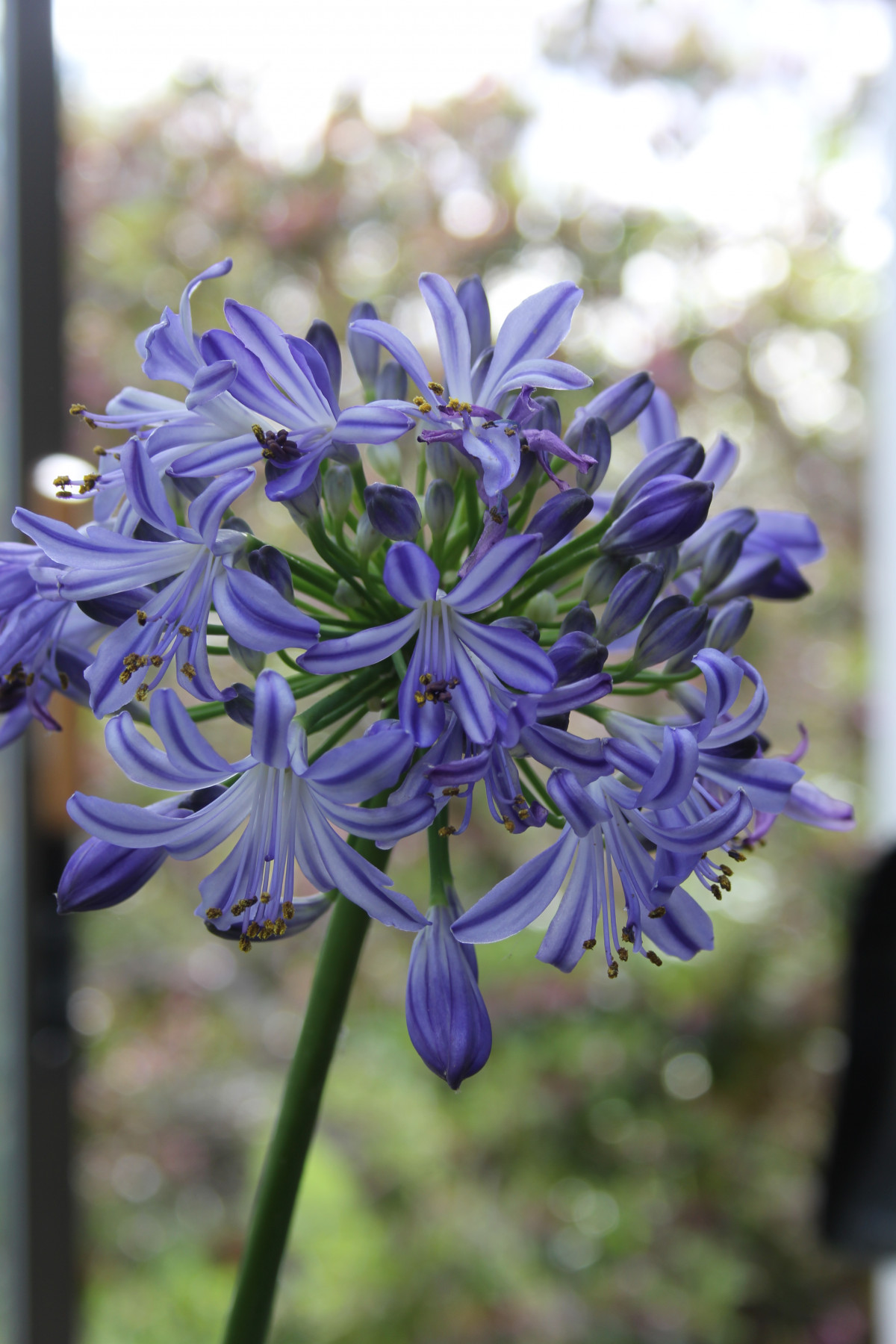
If you live in southern California, don’t read this. Agapanthus can grow year-round in warmer climates, but in Rhode Island it is an almost perfect greenhouse plant. While deciduous agapanthus can stand a light frost if their roots are well protected, the plant will be killed if the ground freezes. Evergreen plants have fleshier leaves and are more likely to die with just a light frost. Their fleshy leaves do not like to be frozen and collapse as soon as they thaw. However, if you move the plants into a greenhouse for the winter and keep them above freezing, they will reward you with a blue ball of color that can last for quite a long time. You can, if you wish, start plants from seed, but I have found that germinations tends to be spotty and it usually takes two to three years before the plants come into flower. You will need to keep young plants in the warm (above 50 degrees F), until they are large enough to be put into 4” pots. Continue to keep them warm as the plant grows until you can either transplant them outside in spring or move them into larger pots. If you plant them outside you will need to dig them up and move them into the greenhouse in fall where you get a frost.
Agapanthus originally came from South Africa and that will give you a clue to the conditions they prefer. Ideally, the soil should be loamy, well drained and sunny with a pH right around 7. The roots should be set about 2” below the soil surface and, if planting outside, the plants should be about 18” apart. The plants need to be mulched as they may not set flower if they are subject to drought.

The plants can easily be grown in containers, but do not put them in too large a container. They prefer to be slightly root bound to flower. In a large container they will make a lot of leaves but may not flower. Do not allow the plants to become root-bound, this too, will stop them from flowering.
If your plants become root-bound, knock them out of the container and divide the fleshy roots into several plants. Each in its own pot. This can also be done after flowering while the plant is resting if you simply want to increase your stock. Greenhouse plants should be divided in December to January to allow them to flower in spring. After you have replanted them in a good quality potting mix water the roots in and wait. In spring the plant will send up strap-like leaves but may not flower for a year or two.
Container and outdoor plants should be fertilized every two weeks with a regular all-purpose fertilizer right up until the buds begin to break into flower. After the flowers die back – usually in fall – let the plant rest for several weeks and in late winter or early spring, for potted plants, begin to fertilize it again. In the greenhouse you will usually see flowers by March or early April. If you are going to transplant them outside, begin fertilizing after you have transplanted them


